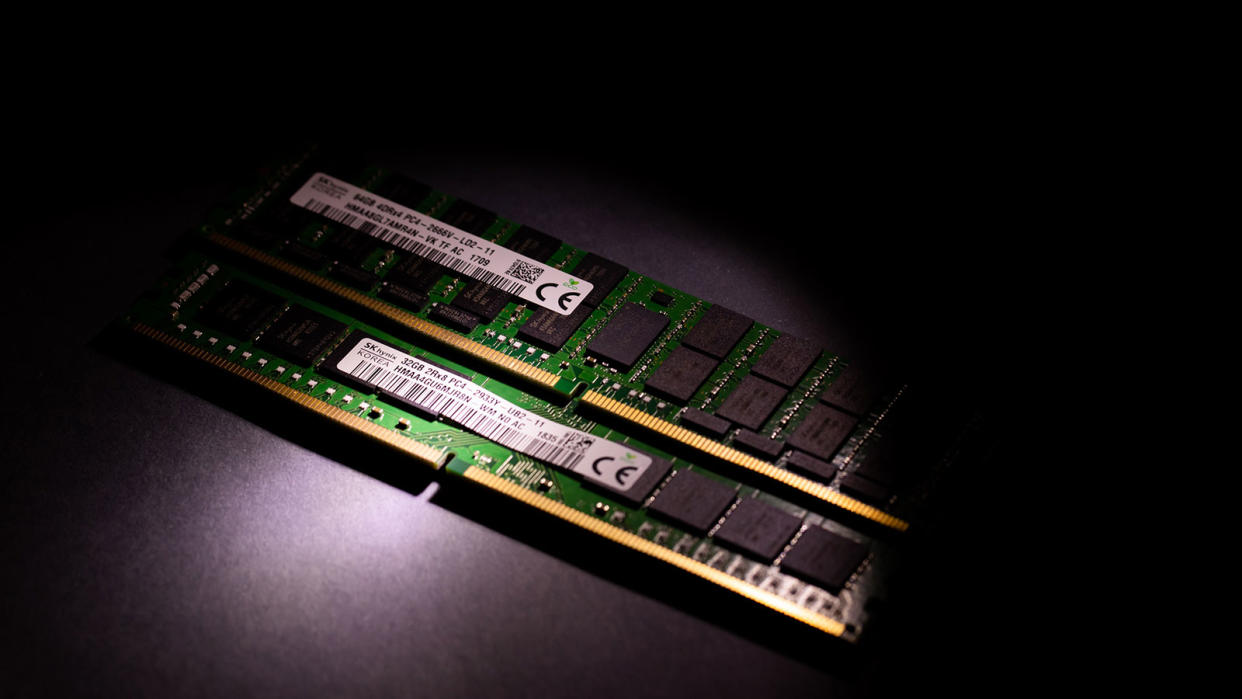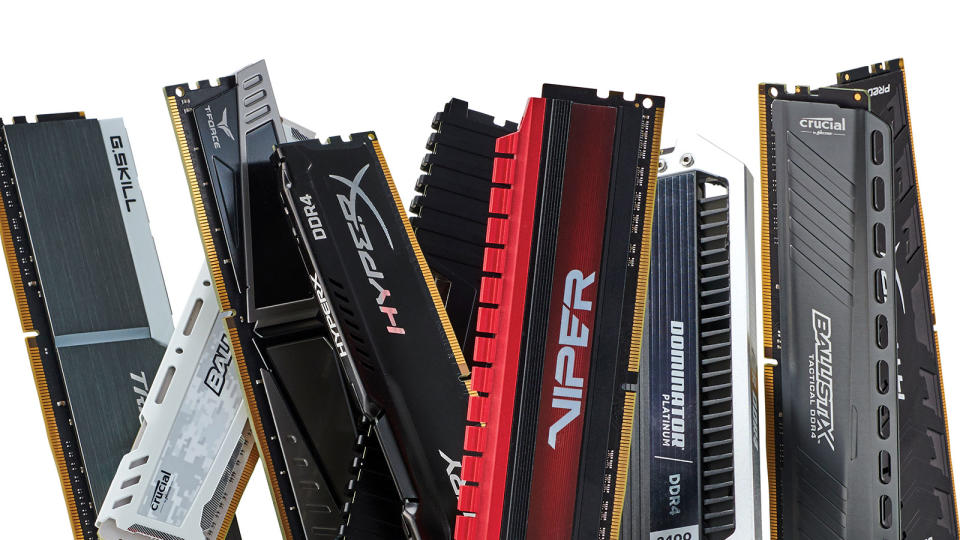What Does RAM Do to Speed Up Your Computer?

Boosting a computer's performance is a common goal for casual users and techies alike. One of the most common upgrades is adding more RAM, or random-access memory.
But what does RAM do in terms of making your computer faster? To answer this, we have to unpack the intricacies of computer memory.
Understanding RAM and Its Role
RAM stands for random-access memory, a type of computer memory that allows data to be accessed randomly. This means that any byte of memory can be accessed without touching the preceding bytes. This differs from read-only memory (ROM), which requires sequential access.
RAM is your computer's short-term memory, and the machine uses it not just for gaming but for all tasks. Any time you want to use your computer, the RAM is ready to store data and the programs that the central processing unit (CPU) will need while executing a task.
Adding more RAM can make your computer run faster. However, the performance boost will depend on what you're using your computer for and the existing RAM.
For general tasks, enough RAM means smooth operations with minimal loading times.
For more intensive tasks, such as gaming, more RAM means better multitasking capabilities and performance.
Types of RAM
There are different types of random-access memory, each with its own unique characteristics.
Dynamic RAM: DRAM is made up of memory cells that are refreshed constantly while the computer is on. It is the most common form of RAM in computing devices.
Static RAM: SRAM does not need to be refreshed as frequently, which leads to lower power consumption. When it comes to static RAM vs. dynamic RAM, SRAM is faster.
Synchronous dynamic RAM: SDRAM operates in sync with the system clock speeds and is faster than conventional DRAM.
Video RAM: The graphics card uses VRAM for storing image data for quick access by the computer's processor. This can improve your gaming experience and performance when editing video.
RAM and System Performance
Additional RAM in a computing device means you can run the operating system and more applications simultaneously. This reduces the computer's reliance on virtual memory — a process that involves the operating system using hard disk space as temporary storage.
This is significant because using virtual memory is considerably slower than using random-access memory. Every time a computer loads new data, it typically fetches it from the slower long-term storage unless it's already available in the faster, immediate data storage of the computer's RAM.
When you increase your computer's RAM capacity, you effectively increase the amount of information your computer can handle at a given time, which can translate to improved performance.
This is particularly noticeable in systems that started with less memory and were struggling to manage modern applications. Tasks that once caused the system to lag due to insufficient random-access memory will see a marked improvement after you add RAM.
Specific types of random-access memory, like VRAM, are vital components for tasks requiring high-speed access to video and graphics data (gaming, professional graphics work, etc.).
How Much RAM Is Enough?
The answer to this question depends largely on your particular system's requirements and the types of applications you run.
Modern games, video editing software and other memory-intensive applications can benefit significantly from more RAM. This is because upgrading RAM means your computer can store more data in the temporary storage of the computer's main memory, allowing quicker access and processing times. Ultimately, this will lead to better performance.

8 Tips for Adding RAM
Upgrading your computer’s random-access memory, or RAM, is one of the most straightforward and effective ways to boost its performance.
However, the process requires a bit of knowledge to pull off correctly. Here are some key tips to help you add RAM to your computing device and ensure better performance.
1. Assess Your Needs
Before purchasing additional memory, consider how much RAM you currently have and how much memory you actually need. Modern applications, especially high-end gaming and video editing software, may require substantial amounts of RAM.
Check your system's performance through your Task Manager (on a PC) or system monitor to see if your current memory usage often reaches its limit. For just gaming or general use, the amount of RAM required can differ greatly.
2. Check the Compatibility
Your motherboard dictates what type of RAM you can install. Check whether it supports synchronous dynamic RAM (SDRAM), double data rate (DDR), or other specific types like static RAM (SRAM) or dynamic RAM (DRAM).
Also, ensure that the clock speeds of the new RAM modules are compatible with your motherboard. Using RAM that supports higher speeds than your system can lead to wasted potential. The memory will only operate at the maximum speed the motherboard supports.
3. Choose the Right Type
Understanding the differences between the various types of RAM is important. For most users, dynamic random-access memory will suffice, but tasks that require quick access to stored data, like professional photo editing or 3-D rendering, might benefit from the faster access speeds of static random-access memory or video random access memory.
If your computer uses dual-channel memory configuration, it's best to install RAM in pairs for optimized performance.
4. Determine the RAM Capacity
Motherboards have limited slots for RAM modules, and installing more RAM than your system can handle won’t improve your computer's performance. Review your motherboard’s documentation or the manufacturer’s website to find out how much RAM you can add before you reach the maximum memory capacity.
It's also a good idea to check whether there are any specific requirements for the memory's configuration (like installing it in pairs for dual-channel performance).
5. Install With Care
When you’re ready to install new RAM, first ensure your computer is turned off and unplugged. Ground yourself to avoid static electricity damage to the RAM modules or other internal components.
Open your computer case and locate the RAM slots. Remove any existing RAM if necessary, being mindful of the clips that hold the memory in place. Align the new modules with the slot, ensuring the notch on the pin matches the slot, and press firmly until the clips lock the RAM in place.
6. Upgrade in Stages
If you're unsure about how much memory you need, or if you're on a budget, consider upgrading in stages. Start with a small increase in RAM to see how noticeable the performance improvements are.
A gradual upgrade can be particularly helpful in systems where memory upgrades do not linearly translate into better performance due to other bottlenecks in the system, such as the processor or graphics card. Do some research to determine if and when those other components will also require upgrades.
7. Optimize Your Operating System
After installing the new RAM, update your operating system to ensure it recognizes the new memory. Modern operating systems like Windows or macOS automatically detect and configure new RAM, but checking for the latest updates can prevent any potential issues.
Additionally, tweaking your operating system’s settings for how it handles virtual memory can also help optimize the performance gains from your new RAM.
8. Monitor and Adjust
Post-upgrade, monitor your system’s performance to ensure the new RAM is functioning correctly. On a PC, you can use the Task Manager to track its RAM usage and check for any potential issues; on a Mac, select "About This Mac" from the Apple menu.
Frequent swapping of data to the hard disk will indicate that you need yet more RAM. Regularly clearing junk files and managing startup programs can also help maximize the performance of your newly upgraded memory.
We created this article in conjunction with AI technology, then made sure it was fact-checked and edited by a HowStuffWorks editor.
Original article: What Does RAM Do to Speed Up Your Computer?
Copyright © 2024 HowStuffWorks, a division of InfoSpace Holdings, LLC, a System1 Company

 Yahoo News
Yahoo News 
